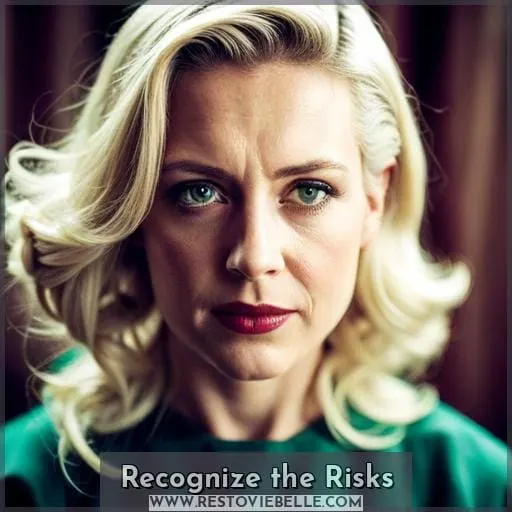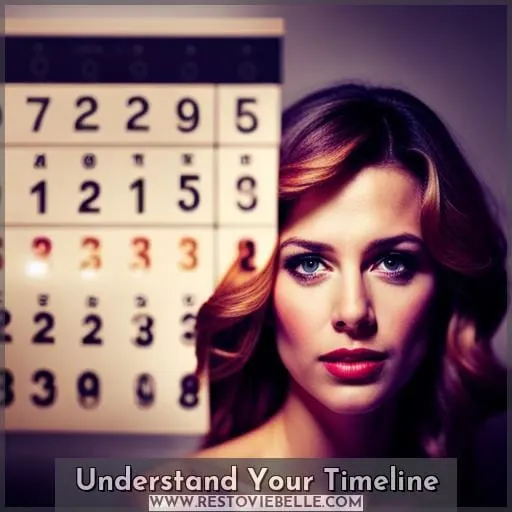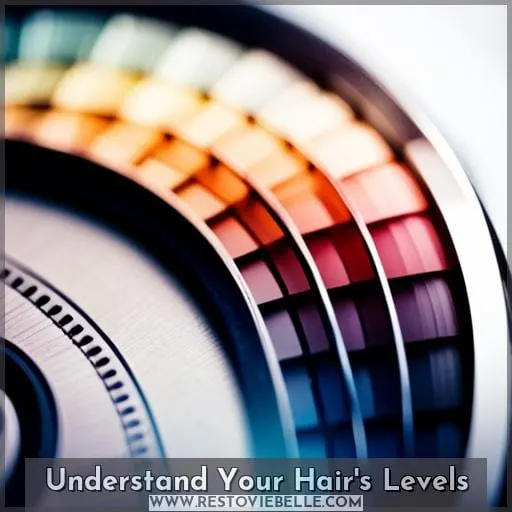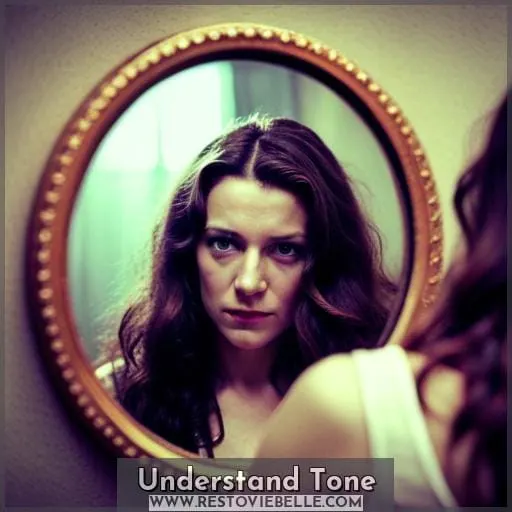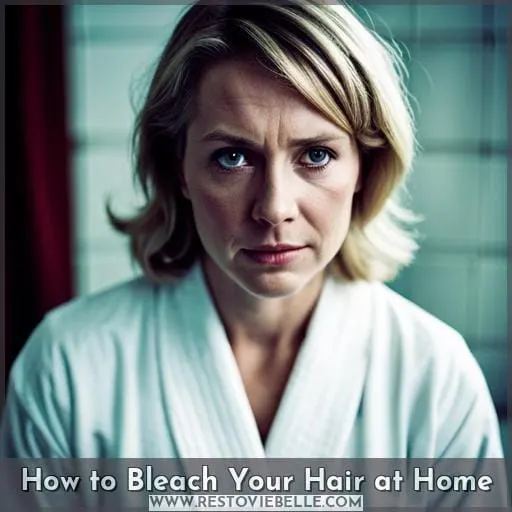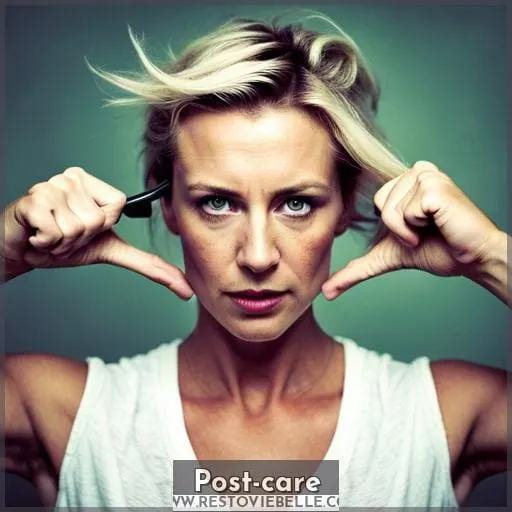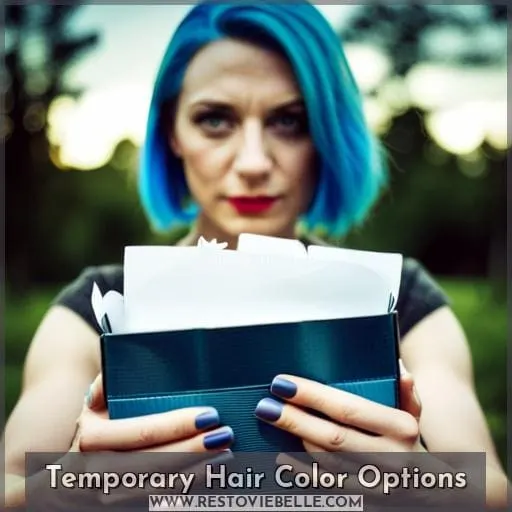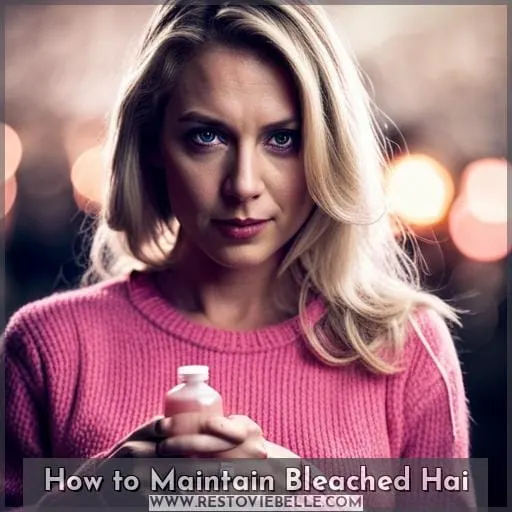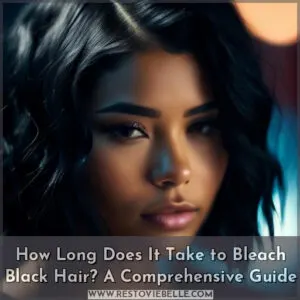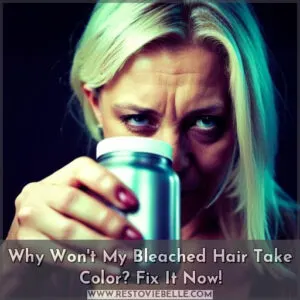This site is supported by our readers. We may earn a commission, at no cost to you, if you purchase through links.
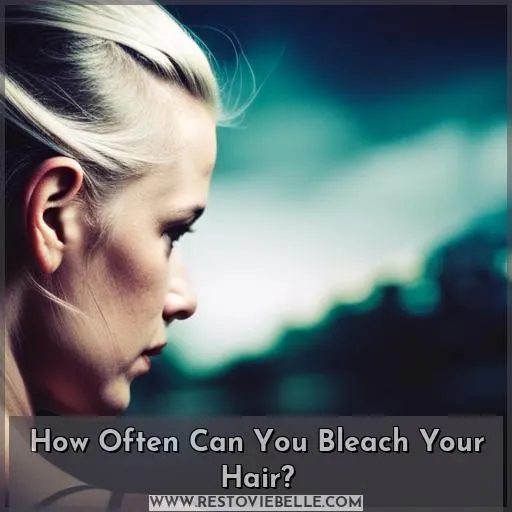 Congratulations! You’ve decided to take the plunge and bleach your hair. But before you grab that bottle of bleach, it’s important to understand how often you can safely bleach your hair without causing damage.
Congratulations! You’ve decided to take the plunge and bleach your hair. But before you grab that bottle of bleach, it’s important to understand how often you can safely bleach your hair without causing damage.
In this article, we’ll explore the risks involved in bleaching, share tips on doing thorough research, and help you understand your hair’s timeline and levels. So let’s dive in and learn just how often you can achieve that stunningly lightened look while keeping your locks healthy and vibrant.
Table Of Contents
- Key Takeaways
- Recognize the Risks
- Do Your Research
- Understand Your Timeline
- Understand Your Hair’s Levels
- Understand Tone
- Supplies You’ll Need
- How to Bleach Your Hair at Home
- Post-care
- Temporary Hair Color Options
- How to Maintain Bleached Hai
- Frequently Asked Questions (FAQs)
- What are the potential long-term effects of frequent hair bleaching?
- Can I bleach my hair if it has previously been treated with chemicals or color?
- How can I determine the appropriate level of bleach to use for my hair?
- Are there any alternatives to bleaching for achieving lighter hair?
- How can I minimize damage to my hair while bleaching?
- Conclusion
Key Takeaways
- Bleaching can cause significant damage to hair, so it’s important to assess the condition of your hair before deciding on a bleaching regimen.
- It’s generally recommended to wait at least six weeks before reapplying bleach to minimize the risk of damage.
- Hair levels, which refer to the lightness or darkness of your natural hair color, determine how easily and effectively bleach will lift the color from your strands.
- Toner is used after bleaching to counteract unwanted brassy or yellow tones and achieve your desired tone.
Recognize the Risks
Recognizing the risks of bleaching your hair is crucial.
Bleaching can cause significant damage to your hair, affecting its health and overall appearance.
The process involves stripping away the natural color of your hair, leaving it vulnerable to dryness, breakage, and brittleness.
Additionally, frequent bleaching can lead to increased porosity in the hair shafts, making them more prone to damage from external factors such as heat styling or chemical treatments.
It’s important to understand that every individual’s hair is unique in terms of porosity and ability to withstand bleach without severe damage.
Therefore, it’s essential not only to assess the condition of your hair before deciding on a bleaching regimen but also consult with a professional hairstylist who can provide personalized advice based on their expertise and knowledge about different types of bleach products available in the market.
Do Your Research
Now that you’re aware of the risks associated with bleaching your hair, it’s crucial to do your research before diving into the process.
Taking the time to gather information and educate yourself will help ensure a successful outcome while minimizing damage. Start by talking to your stylist or researching reputable sources online for guidance on how often you can safely bleach your hair.
Damage prevention should be a top priority when it comes to bleaching, so it’s essential not to overdo it. Experts recommend waiting at least six weeks between bleach applications to allow sufficient time for your hair’s health and integrity to restore.
By doing thorough research and following professional advice, such as limiting bleach applications and waiting at least six weeks between treatments, you can protect against over-bleaching and maintain the health of your precious locks.
Understand Your Timeline
To properly understand your timeline for bleaching your hair, it’s important to consider a few factors.
- It’s generally recommended to wait at least six weeks before reapplying bleach to minimize the risk of damage.
- The American Academy of Dermatology suggests waiting eight to ten weeks for touch-ups after any hair dye treatments.
- Talking to your hairstylist can provide you with a more accurate timeline based on the condition and needs of your specific strands.
- Keep an eye out for signs of damage such as dryness, brittleness, breakage, frizziness, and loss of shine in order to limit bleach applications accordingly.
- Understanding the level (9 or 10) and tone desired for your hair will also help determine how often you should bleach and whether additional steps like using a hair toner may be necessary in between sessions.
[ADDITIONAL INFORMATION]:
- Understand Your Hair’s Levels:
- Level 9 refers to light blonde while level 10 indicates platinum or very light blonde.
- Signs of Damage:
- Dryness/brittleness indicate lack of moisture;
- Breakage means weakened strands;
- Frizziness implies excessive porosity due to damage;
- Loss of shine shows damaged cuticles unable reflect light effectively;
- Yellow/orange tones suggest undesired brassiness caused by improper bleaching technique.
- Supplies Needed:
- For Bleach Applications – gloves,
- Plastic bowl/brushes/capes/clips/combs/caps/gloves/mixing tools/hair foil/powdered/lightener developer/toner/sulfate-free shampoo/
- Protein-rich conditioner/deep conditioning treatment/regrowth kits/reconstructive bond repairers/color-safe heat protectant/sun protection products/gentle detangling brush/wide-tooth comb/nutrient-rich diet/plenty water intake/professional consultations before procedures
Understand Your Hair’s Levels
To understand how often you can bleach your hair, it’s important to familiarize yourself with your hair’s levels.
Hair levels refer to the lightness or darkness of your natural hair color, which determines how easily and effectively bleach will lift the color from your strands.
Here are three key points about understanding your hair’s levels:
- Hair Level 1-4: These are darker shades of brown to black that require more time and effort for bleaching.
- Hair Level 5-7: These are medium to light brown shades that can be lifted relatively easily with bleach.
- Hair Level 8-10: These are blonde shades that have already been lightened significantly and may require less frequent bleaching or touch-ups.
By identifying where your natural hair falls on this scale, you can better determine how often you need to bleach it in order to achieve and maintain the desired level of lightness or blondeness without causing excessive damage.
Understand Tone
To understand tone when bleaching your hair, you need to consider the desired shade and undertones you want to achieve.
Tone refers to the warmth or coolness of your hair color. Warm tones have hints of red, orange, or yellow, while cool tones have blue or violet undertones.
When lightening your hair with bleach, it’s important to know that brassy or yellow tones can be a common result. To counteract these unwanted shades and achieve your desired tone, toner is used after bleaching.
The choice of toner depends on the level of lift achieved during bleaching as well as personal preference for warm or cool tones. Developers are typically mixed with toners based on their strength – higher volume developers provide more lifting power but may cause greater damage.
It’s crucial to remember that achieving the perfect tone takes time and patience. Hair porosity and texture also play a role in how well the bleach lifts hair color and accepts toning products.
Incorporating deep conditioning treatments into your post-bleach routine is essential for maintaining healthy locks while combatting dryness caused by chemical processes like lightening.
Understanding tone allows you to make informed decisions about which colors will best suit you during each stage of achieving silver hair perfection.
Supplies You’ll Need
To successfully bleach your hair at home, there are several supplies you’ll need.
First, gather the necessary supplies for bleaching, such as:
- A mixing bowl and brush
- Bleach powder and developer
- Gloves to protect your hands
- A plastic shower cap (optional)
Additionally, if you plan on toning your hair silver or maintaining its strength with aftercare products like deep conditioning treatments or purple shampoo.
Supplies for Bleaching
You’ll need several supplies to safely bleach your hair at home.
- Bleach
- Developer
- A plastic shower cap (optional)
- A timer to watch the clock and check the progress of the bleaching process.
After bleaching, don’t forget to thoroughly rinse – and rinse again – before nourishing your hair with color gloss and using a color-safe shampoo for maintenance.
Supplies for Toning Your Hair Silver
You’ll need the following supplies to tone your hair silver:
- Toning shampoo or purple shampoo: These products help neutralize brassiness and maintain a cool, silver hue.
- Toner and developer: The toner is used to further adjust the color of your hair, while the developer helps activate it.
- Bleach (if necessary): If your hair isn’t light enough for a silver tone, you may need to bleach it first.
- Hair color brush and bowl: These tools are essential for mixing and applying the toner evenly throughout your hair.
Supplies for Strengthening and Aftercare
After toning your hair silver, it’s crucial to have the right supplies for strengthening and aftercare in order to maintain healthy and vibrant bleached hair.
Some essential supplies include:
- A deep conditioner to nourish and hydrate your strands
- A hair mask for added moisture
- A heat cap for deep conditioning treatments
- A microfiber towel to gently dry your hair without causing damage or frizz
- Purple shampoo to neutralize any brassy tones
How to Bleach Your Hair at Home
Now that you have gathered all the necessary supplies, it’s time to learn how to bleach your hair at home. Bleaching can be a daunting process, but with the right knowledge and technique, you can achieve beautiful results while minimizing damage to your hair.
Here is a step-by-step guide:
- Section your hair: Divide your hair into manageable sections using clips or elastics.
- Mix bleach and developer: Follow the instructions on the bleach kit to mix the powder bleach with developer in a non-metallic bowl.
- Apply bleach: Starting from the back of your head, apply the mixture evenly onto each section of hair using an applicator brush.
- Bleach roots last: Begin applying at least half an inch away from your scalp and work towards it for more even processing.
- Use plastic shower cap(optional): Covering your bleached strands with a plastic shower cap can help trap heat and accelerate lightening (optional).
- Watch carefully & check progress : Keep track of time as per manufacturer directions; monitor color changes by checking every 10-15 minutes until desired level is achieved
- Rinse – rinse again!: Once you’ve reached desired lightness, rinse out all traces of bleach thoroughly under cool water until water runs clear
Remember that proper aftercare is essential for maintaining healthy bleached locks! Deep condition regularly , use purple shampoo as needed , limit heat styling tools usage,and protect against sun exposure.
By following these steps properly and taking care of your hair health, you can safely bleach your hair at home.
Post-care
After bleaching your hair, it’s important to:
- Schedule regular trimmings to get rid of any damaged ends and promote healthy growth.
- Deep condition daily to help restore moisture and nourish your hair.
- Use weekly bond repairing treatments to strengthen the bonds in your hair that may have been weakened during the bleaching process.
- Maintain consistency with your bleach touch-ups and regularly bleach just the roots to prevent excessive damage to the rest of your hair.
Schedule Regular Trimmings
To maintain healthy and vibrant bleached hair, schedule regular trimmings. This helps prevent split ends and breakage caused by the bleach process.
Additionally, avoid heat styling, protect your hair from the sun, limit bleach applications, use a gentle shampoo and conditioner,and eat a healthy diet with plenty of water for optimal hair health.
Deep Condition Daily
To maintain the health and vitality of your bleached hair, deep condition daily.
Using a nourishing hair mask will help repair damage and restore moisture to keep your locks looking healthy and vibrant.
Use Weekly Bond Repairing Treatments
Make sure to regularly incorporate weekly bond repairing treatments into your hair care routine.
These treatments not only prevent hair from breaking but also protect it from heat and sun damage.
Additionally, they help limit the need for frequent bleach applications.
Keep Consistent and Bleach Roots
To maintain your bleached hair:
- Consistently bleach your roots to avoid over-processing.
- Use a gentle shampoo.
- Protect your hair from heat.
- Eat a healthy diet and drink plenty of water for overall hair health.
Temporary Hair Color Options
When it comes to maintaining your bleached hair, temporary hair color options can provide a fun and versatile way to change up your look without causing further damage.
Temporary hair color refers to products that allow you to experiment with different shades without the commitment of permanent dye.
One option is semi-permanent hair color, which coats the outer layer of your strands and gradually fades over time.
Another choice is color depositing shampoos, which add pigment while cleansing your hair. These shampoos are available in various shades and can be used regularly for more intense results or occasionally for a subtle tint.
If you’re looking for something even more temporary, consider trying out alternative options like hair chalk or hair mascara.
How to Maintain Bleached Hai
To maintain bleached hair, you should regularly use purple shampoo and deep condition your hair.
Purple shampoo helps to counteract any brassy or yellow tones that can develop in bleached hair, keeping it looking vibrant and cool-toned.
Deep conditioning is essential for replenishing moisture and nourishment to the hair strands that may have been damaged during the bleaching process.
Additionally, there are a few other important steps you can take to maintain your bleached hair:
- Use a gentle shampoo: Opt for sulfate-free shampoos specifically formulated for color-treated or damaged hair.
- Avoid heat styling: Excessive heat from styling tools like flat irons and curling wands can further damage already fragile bleach-damaged strands.
- Protect your hair from the sun: UV rays can cause color fading and dryness in bleach-treated locks, so wear hats or use products with UV protection when spending time outdoors.
- Limit bleach applications: Bleaching too frequently increases the risk of excessive damage, so give your scalp enough time between sessions to recover.
By following these maintenance tips along with regular touch-ups as needed by professionals experienced in bleach applications will help keep your blonde locks healthy-looking while minimizing damage caused by over-processing.
Frequently Asked Questions (FAQs)
What are the potential long-term effects of frequent hair bleaching?
Frequent hair bleaching can lead to long-term damage, such as:
- Dryness
- Brittleness
- Breakage
- Loss of shine
It’s important to give your hair time to recover between bleach sessions and prioritize proper care and nourishment for healthy-looking locks.
Can I bleach my hair if it has previously been treated with chemicals or color?
Yes, you can bleach your hair even if it has been previously treated with chemicals or color. However, it’s important to consult a professional hairstylist who can assess the condition of your hair and determine the best approach for achieving desired results while minimizing damage.
How can I determine the appropriate level of bleach to use for my hair?
To determine the appropriate level of bleach for your hair, consult a professional stylist who can assess its condition and match it with the right strength. Like an artist selecting colors, they’ll ensure optimal results without compromising your hair’s health.
Are there any alternatives to bleaching for achieving lighter hair?
To achieve lighter hair without bleaching, you can consider alternative methods such as:
- Using high-lift hair dyes
- Opting for highlights
These options can help lighten your hair while minimizing the potential damage caused by traditional bleaching techniques.
How can I minimize damage to my hair while bleaching?
To minimize damage while bleaching, use a low-volume developer and gradually increase strength as needed.
Apply bleach evenly, avoiding overlap onto previously bleached hair.
Deep condition regularly and avoid heat styling to maintain healthy hair during the process.
Conclusion
To achieve stunningly lightened hair while keeping it healthy and vibrant, it’s important to understand how often you can safely bleach your hair.
Recognize the risks involved and thoroughly research the process.
Understand your hair’s timeline, levels, and tone to achieve the desired results.
Gather the necessary supplies for bleaching, toning, and aftercare.
Follow proper techniques to bleach your hair at home and ensure post-care by scheduling regular trims, deep conditioning daily, and using bond repairing treatments.
Consider temporary hair color options to maintain your bleached hair.

